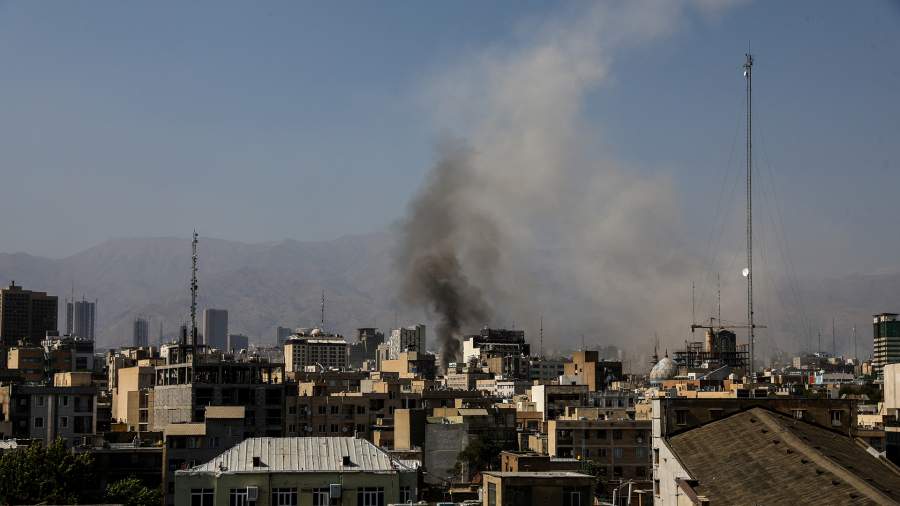What is Iran's nuclear program? Analysis

Israel attacked Iran's nuclear infrastructure, accusing it of intending to create weapons of mass destruction. At the same time, Tehran claims that its nuclear program pursues only peaceful goals. What opportunities the Islamic Republic has and whether it poses a danger to other countries are discussed in Izvestia.
The essence of the program
• Iran's nuclear program is aimed at creating and developing national technologies for a complete nuclear fuel cycle, that is, from uranium mining to enrichment and possible nuclear energy production. The Iranian program dates back to the 1950s, when the first research reactors appeared in the country with the support of the United States as part of the Atom for Peace program. After the 1979 Islamic Revolution and subsequent international pressure, development slowed down, but in the 1990s efforts were resumed with assistance from Russia and other countries.
• Iran has built at least 27 uranium enrichment facilities. However, some of them have not been officially declared. Iran's uranium enrichment is of international concern, as the technology can be used both for peaceful atomization and for the creation of nuclear weapons. Against this background, since the early 2000s, Iran has been the subject of the attention of the IAEA and the UN Security Council, which led to a series of sanctions and diplomatic negotiations.
In 2015, the Joint Comprehensive Plan of Action (JCPOA) was signed, according to which Iran limited its nuclear development in exchange for the lifting of sanctions. Subsequently, after the US withdrawal from the agreement in 2018 and the resumption of pressure, Iran began to gradually curtail the fulfillment of contractual obligations. Today, Iran's nuclear program remains one of the key topics of global security, international diplomacy, and scientific and technological development in the Middle East.
• Today, Iran has the potential to create weapons of mass destruction, as it has access to the necessary technologies, specialists and materials. At the same time, the rate of accumulation of uranium with an increased level of enrichment is already alarming even for those countries that traditionally take a more restrained position. Any external shock or internal crisis can push the Iranian leadership to cross the last red line.
Main facilities
• Iran's nuclear infrastructure includes key facilities covering uranium mining, processing, enrichment, scientific research, and nuclear energy production. Tel Aviv's recent strikes on Iranian nuclear facilities have caused targeted damage primarily to ground-based storage facilities, energy supply systems, and communications. However, Israel or any other country does not have the ability to completely destroy Iran's nuclear program, because a significant part of the complexes is underground.
One of the main uranium enrichment centers operates in Natanz. It includes aboveground and underground facilities. There are thousands of centrifuges operating there. He was injured as a result of Israeli shelling, but continues to work. A nuclear technology center is located in Isfahan, where a uranium conversion plant and research facilities for fuel production operate.
Fordo, a fortified underground facility in a mountainous area, is also used for uranium enrichment and is under constant monitoring by the IAEA. Bushehr is home to the country's first nuclear power plant with a water-powered reactor, built with Russian assistance and connected to the electric grid in 2011.
• There is a research center in Tehran dedicated to the production of medical and industrial isotopes. There are also uranium mining centers in Ardakan, where yellowcake is produced, the initial component for the production of enriched uranium. There is a nuclear reactor in Arak with the ability to produce weapons-grade plutonium. These and other facilities form a complete chain of the nuclear fuel cycle and play a central role in Iran's national nuclear program.
Prospects for a nuclear deal
• In mid-April, US President Donald Trump gave Iran 60 days to conclude a nuclear deal. The parties managed to agree on the issue of maintaining Tehran's own enrichment system. But after the Israeli attacks on Iranian nuclear and military facilities, negotiations with the United States were under attack. In Iran, negotiations are considered meaningless in the context of military operations.
• Trump expressed his willingness to discuss a new deal after the Israeli strikes, hoping that now "Iran will take a more serious approach to dialogue." At the same time, against the background of the escalation of the conflict, American demands are becoming tougher. Tel Aviv as a whole insists on a complete cessation of enrichment and stricter international control over the fulfillment of its demands.
• At the same time, Iran continues to increase its uranium reserves with enrichment up to 60%. In May, according to the IAEA, Tehran had 408 kg. Such uranium can be easily enriched to 90% and obtain one of the components of a nuclear weapon.
• The military escalation of the conflict between Israel and Iran has complicated the diplomatic atmosphere around the Iranian nuclear program. Iran doubts the constructiveness of the negotiations, the United States puts forward harsh conditions, Israel exerts pressure, and enriched uranium reserves and reduced controls make the prospects for an expansion of the conflict dim. If the conflict can be localized and stabilized, theoretically the parties will be able to return to negotiations. But with the ongoing escalation, the prospect of a deal remains slim.
When writing the material, Izvestia interviewed:
- Dmitry Brije, an expert in international relations and political science, a specialist in the Middle East;
- political scientist Mais Kurbanov.
Переведено сервисом «Яндекс Переводчик»



